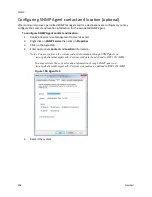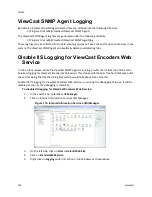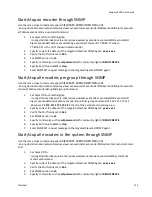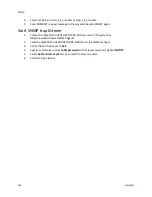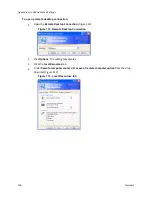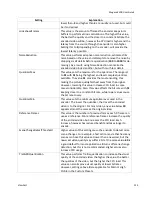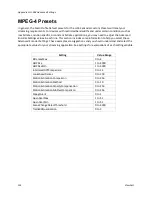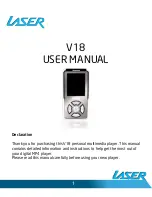
Appendix A: H.264 Advanced Settings
122
ViewCast
Baseline profile is for video conferencing and mobile applications and has the lowest demands on CPU
load and memory usage, but the lowest resulting quality. Main profile is for standard-definition TV,
while high profile is best for HD video.
Note: You can use each profile for any resolution video with expected increases in video encode
quality and corresponding impacts to CPU and memory. Finally, you may use additional
changes to the Advanced Encoder Settings to further refine the video encoding.
Settings
Setting
Explanation
BFramesMax
This value sets the maximum number of concurrent B-frames
you can use. More B-frames improve video quality but also
increase CPU load, in some cases considerably. Only Main or
High Profile support B-frames. Changing this value when
Baseline Profile is selected has no effect.
GOPSize
This value sets the maximum interval between IDR (also called
reference) frames. Theoretically, higher values improve
compression because I-frames have more data but it can also
increase the appearance of fluctuating quality because more
P- or B-frames (partial) are used. If you see “pulsing” or
“strobing” in the encoded video, this value may be too low.
GOPSizeMin
This value sets the minimum length between IDR (reference)
frames. This setting limits the minimum length after each I-
frame before another can be placed. The suggested default is
1 x the frame rate.
InLoopDeblockingFilterAlpha
This value affects the overall amount of deblocking applied to
the video. Higher values remove blocky appearance more
efficiently, but retain less detail causing the image to appear
softened. This value is the most important parameter in
determining the overall sharpness of your encode. To make a
low bit rate encode look smoother, set this to a positive
number. The default value is
0
and should be sufficient to
eliminate most blocking. In general, values lower than
-3
and
higher than
3
are usually not used, but could be if so desired.
InLoopDeblockingFilterBeta
This value determines whether something in a block is a detail
or not when deblocking is applied to it. Lower values apply less
deblocking to more flat blocks with detail present and more
deblocking to blocks without detail. Higher values cause more
deblocking to be applied to less flat blocks with details
present. Raising the value of Beta deblocking is a good way to
get rid of ringing artifacts by applying more aggressive filtering
to blocks that are not very flat. Lowering the value of Beta
deblocking is a good way to reduce the amount of DCT blocks
without blurring the entire picture. Again, the default value of
0
usually is good enough. Set this to a positive number to
smooth out low bit rate video encodes. In general, values
Summary of Contents for Nagara 2200
Page 1: ...Niagara 2200 User Guide...
Page 42: ...Advanced Operations 36 ViewCast Figure 26 Flash Encoder properties...
Page 55: ...Niagara 2200 User Guide ViewCast 49 9 Click Save Settings...
Page 74: ......
Page 80: ......
Page 98: ......
Page 102: ...SNMP 96 ViewCast Figure 91 Installation Folder 4 Click Next Figure 92 Confirm Installation...
Page 111: ...Niagara 2200 User Guide ViewCast 105 Figure 105 IP Addresses...
Page 126: ......
Page 149: ......

